Masjid al-Haram
Masjid al-Haram
| Part of a series on |
| Islam |
|---|
 |
History[edit]
Era of Abraham and Ishmael[edit]
Era of Muhammad[edit]
Umayyad era[edit]
Ottoman era[edit]
Saudi era[edit]
First Saudi expansion[edit]
Second Saudi expansion[edit]
Third Saudi expansion[edit]
List of former and current Imams and Muezzins of the Holy Mosque[edit]
Former Imams[edit]
- Abdullah Al-Khulaifi (Arabic: عَبْد ٱلله ٱلْخُلَيْفِي), appointed Imam and Khateeb from 1953 till his death in 1993.
- Ahmad Khatib (Arabic: أَحْمَد خَطِيْب), Islamic Scholar from Indonesia
- Ali bin Abdullah Jaber (Arabic: عَلِى بِن عَبْدُ ٱلله جَابِر), Imam from 1981 to 1983, guest Imam for Ramadhan 1986-1989
- Umar Al-Subayyil (Arabic: عُمَر ٱلسُّبَيِّل), Imam and Khateeb from 1993 until 2002, died in 2002
- Muhammad Al-Subayyil (Arabic: مُحَمَّد ٱلسُّبَيِّل), died in 2013
- Abdullah Al-Harazi (Arabic: عَبْد ٱلله الْحَرَازِي), former Chairman of Saudi Majlis al-Shura
- Ali bin Abdur-Rahman Al-Huthaify (Arabic: عَلِي بِن عَبْدُ ٱلرَّحۡمٰن ٱلْحُذَيْفِي), guest Imam for Ramadhan 1981, 1985–1986, 1988–1991, now Chief Imam of The Prophet's Mosque,
- Salah ibn Muhammad Al-Budair (Arabic: صَلَاح ابْن مُحَمَّد ٱلْبُدَيْر), led Taraweeh in Ramadan 1426 (2005) and 1427 (2006), now Deputy Chief Imam of the Prophet's Mosque
- Adil al-Kalbani[47] (Arabic: عَادِل ٱلْكَلْبَانِي)
- Saleh Al-Talib (suspended)
- Khalid al Ghamdi (suspended)
Current Imams[edit]
- Abdur-Rahman As-Sudais, appointed as Imam and Khateeb in 1404 (1984).
- Saud Al-Shuraim, appointed as Imam and Khateeb in 1412 (1992).
- Salih bin Abdullah al Humaid, appointed as Imam and Khateeb in 1404 (1984).
- Usama Abdul Aziz Al-Khayyat, appointed as Imam and Khateeb in 1418 (1998).
- Abdullah Awad Al Juhany, appointed as Imam in 1428 (2007) and Khateeb in 1441 (2019).
- Mahir Al-Muayqali, appointed as Imam in 1428 (2007), and Khateeb in 1437 (2016).
- Yasser Al-Dosari, appointed as Imam in 1441.
- Bandar Baleelah, appointed as Imam in 1434 (2013), and Khateeb in 1441 (2019).[48]
- Faisal Jameel Ghazzawi, appointed as Imam and Khateeb in 1429 (2008).[49]
Former Muezzins[edit]
Current Muezzins[edit]
- Sheikh Ali Ahmed Mulla (Chief Muezzin and longest-serving)
- Sheikh Farooq Hadrawi
- Sheikh Naif Saleh Faidah
- Sheikh Muhammad Yusuf Mudhin
- Sheikh Muhammad Shakir
- Sheikh Ahmed Basnawi
- Sheikh Tawfiq Khoj
- Sheikh Majid Abbas
- Sheikh Ahmed Yunus Khoja
- Sheikh Ahmed Nuhaas
- Sheikh Esam Khan
- Sheikh Saaed Falatta
- Sheikh Hameed Dhaghreree
- Sheikh Muhammad Magrabi
- Sheikh Emad Baqree
- Sheikh Hashim Saqqaf
- Sheikh Hussain Hassan Shahat
- Sheikh Muhammad Basad
- Sheikh Samee Raees
- Sheikh Suhail AbdulHafiz
- Sheikh Ibrahim Madani
- Sheikh Abdullah Bafeef
- Sheikh Muhammad Amry
- Sheikh Turki Hassani
Pilgrimage[edit]
Structures[edit]
- The Ka'bah is a cuboid-shaped building in the center of the Great Mosque and the most sacred site in Islam.[53] It is the focal point for Islamic rituals like prayer and pilgrimage.[53][54][55]
- The Black Stone is the eastern cornerstone of the Kaaba and plays a role in the pilgrimage.[56][57]
- The Station of Abraham is a rock that reportedly has an imprint of Abraham's foot and is kept in a crystal dome next to the Kaaba.[58]
- Safa and Marwah are two hills between which Abraham's wife Hagar ran, looking for water for her infant son Ishmael, an event which is commemorated in the saʿy ritual of the pilgrimage.[citation needed]
- The Zamzam Well is the water source which, according to tradition, sprang miraculously after Hagar was unable to find water between Safa and Marwah.[citation needed]
Destruction of heritage sites[edit]
- Bayt Al-Mawlīd, the house where Muhammad was born, was demolished and rebuilt as a library.[citation needed]
- Dār Al-Arqam, the Islamic school where Muhammad first taught, was flattened to lay marble tiles.[citation needed]
- The house of Abu Jahal has been demolished and replaced by public washrooms.[citation needed]
- A dome that served as a canopy over the Well of Zamzam was demolished.[citation needed]
- Some Uthmani Porticos at the Mosque were demolished.[61]
See also[edit]
- Al-Aqsa Mosque
- Holiest sites in Islam
- Ḥ-R-M
- List of famous mosques
- List of mosques in Saudi Arabia
- List of the oldest mosques
- Lists of mosques
Further reading[edit]
References[edit]
- ^ "Location of Masjid al-Haram". Google Maps. Archived from the original on 25 May 2014. Retrieved 24 September 2013.
- ^ "Revealed: The world's 20 most expensive buildings". The Telegraph. 27 July 2016. ISSN 0307-1235. Archived from the original on 23 August 2017. Retrieved 26 July 2020.
- ^ Daye, Ali (21 March 2018). "Grand Mosque Expansion Highlights Growth of Saudi Arabian Tourism Industry (6 mins)". Cornell Real Estate Review. Archived from the original on 9 February 2019. Retrieved 9 February 2019.
- ^ Denny, Frederick M. (9 August 1990). Kieckhefer, Richard; Bond, George D. (eds.). Sainthood: Its Manifestations in World Religions. University of California Press. p. 69. ISBN 9780520071896. Archived from the original on 18 September 2021. Retrieved 18 August 2019.
- ^ "Great Mosque of Mecca | History, Expansion, & Facts". Encyclopedia Britannica. Archived from the original on 11 December 2019. Retrieved 8 August 2020.
- ^ Quran 3:97 (Translated by Yusuf Ali)
- ^ "Mecca crane collapse: Saudi inquiry into Grand Mosque disaster". BBC News. 12 September 2015. Archived from the original on 12 September 2015. Retrieved 12 February 2019.
- ^ "Is Saudi Arabia Ready for Moderate Islam? - Latest Gulf News". www.fairobserver.com. 3 November 2017. Archived from the original on 1 December 2017. Retrieved 25 November 2017.
- ^ Reid, Richard J. (12 January 2012). "The Islamic Frontier in Eastern Africa". A History of Modern Africa: 1800 to the Present. John Wiley and Sons. p. 106. ISBN 978-0470658987. Archived from the original on 5 March 2021. Retrieved 15 March 2015.
- ^ Palmer, A. L. (26 May 2016). Historical Dictionary of Architecture (2 ed.). Rowman & Littlefield. pp. 185–236. ISBN 978-1442263093. Archived from the original on 1 August 2020. Retrieved 22 October 2018.
- ^ Esposito, John (1998). Islam: The Straight Path (3rd ed.). Oxford University Press. pp. 9, 12. ISBN 978-0-19-511234-4.
- ^ Esposito (2002b), pp. 4–5.
- ^ Peters, F.E. (2003). Islam: A Guide for Jews and Christians. Princeton University Press. p. 9. ISBN 978-0-691-11553-5.
- ^ Alli, Irfan (26 February 2013). 25 Prophets of Islam. eBookIt.com. ISBN 978-1456613075. Archived from the original on 14 April 2021. Retrieved 9 February 2019.
- ^ a b Palmer, A. L. (26 May 2016). Historical Dictionary of Architecture (2nd ed.). Rowman & Littlefield. pp. 185–236. ISBN 978-1442263093. Archived from the original on 1 August 2020. Retrieved 22 October 2018.
- ^ Michigan Consortium for Medieval and Early Modern Studies (1986). Goss, V. P.; Bornstein, C. V. (eds.). The Meeting of Two Worlds: Cultural Exchange Between East and West During the Period of the Crusades. Vol. 21. Medieval Institute Publications, Western Michigan University. p. 208. ISBN 978-0918720580. Archived from the original on 20 November 2020. Retrieved 9 February 2019.
- ^ Mustafa Abu Sway. "The Holy Land, Jerusalem and Al-Aqsa Mosque in the Qur'an, Sunnah and other Islamic Literary Source" (PDF). Central Conference of American Rabbis. Archived from the original (PDF) on 28 July 2011.
- ^ Dyrness, W. A. (29 May 2013). Senses of Devotion: Interfaith Aesthetics in Buddhist and Muslim Communities. Vol. 7. Wipf and Stock Publishers. p. 25. ISBN 978-1620321362. Archived from the original on 13 April 2021. Retrieved 9 February 2019.
- ^ Watt, William Montgomery (2003). Islam and the Integration of Society. Psychology Press. p. 5. ISBN 978-0-415-17587-6. Archived from the original on 6 August 2020. Retrieved 9 February 2019.
- ^ Reid, Richard J. (12 January 2012). "The Islamic Frontier in Eastern Africa". A History of Modern Africa: 1800 to the Present. John Wiley and Sons. p. 106. ISBN 978-0470658987. Archived from the original on 5 March 2021. Retrieved 15 March 2015.
- ^ Quran 2:127 (Translated by Yusuf Ali)
- ^ "Quran 22:27". Archived from the original on 3 October 2016. Retrieved 1 October 2016.
- ^ Quran 21:57–58
- ^ Mecca: From Before Genesis Until Now, M. Lings, pg. 39, Archetype
- ^ Concise Encyclopedia of Islam, C. Glasse, Kaaba, Suhail Academy
- ^ Ibn Ishaq, Muhammad (1955). Ibn Ishaq's Sirat Rasul Allah – The Life of Muhammad Translated by A. Guillaume. Oxford: Oxford University Press. pp. 88–9. ISBN 9780196360331.
- ^ Karen Armstrong (2002). Islam: A Short History. p. 11. ISBN 0-8129-6618-X.
- ^ Guidetti, Mattia (2016). In the Shadow of the Church: The Building of Mosques in Early Medieval Syria: The Building of Mosques in Early Medieval Syria. BRILL. p. 113. ISBN 9789004328839. Archived from the original on 20 November 2021. Retrieved 17 September 2017.
- ^ Petersen, Andrew (2002). Dictionary of Islamic Architecture. Routledge. ISBN 9781134613656. Archived from the original on 20 November 2021. Retrieved 17 September 2017.
- ^ Ali, Wijdan (1999). The Arab Contribution to Islamic Art: From the Seventh to the Fifteenth Centuries. American Univ in Cairo Press. ISBN 9789774244766. Archived from the original on 20 November 2021. Retrieved 17 September 2017.
- ^ James Wynbrandt (2010). A Brief History of Saudi Arabia. Infobase Publishing. p. 101. ISBN 978-0-8160-7876-9. Archived from the original on 3 January 2014. Retrieved 12 June 2013.
- ^ "Gates of Masjid al-Haram". Madain Project. Archived from the original on 18 March 2018. Retrieved 17 March 2018.
- ^ "King 'Abdullah Extension of Masjid al-Haram". Madain Project. Archived from the original on 20 September 2020. Retrieved 20 September 2020.
- ^ "Riyadh Expands Masjid al-Haram". OnIslam.net. 6 January 2008. Archived from the original on 28 December 2013.
- ^ "Historic Masjid Al-Haram Extension Launched". onislam. 20 August 2011. Archived from the original on 12 May 2012. Retrieved 17 November 2011.
- ^ "Saudi Arabia starts Mecca mosque expansion". reuters.com. 20 August 2011. Archived from the original on 20 June 2017. Retrieved 26 June 2012.
- ^ "King launches key Grand Mosque expansion projects". Saudi Gazette. 12 July 2015. Archived from the original on 9 February 2019. Retrieved 9 February 2019.
- ^ "Makkah crane crash report submitted". Al Arabiya. 14 September 2015. Archived from the original on 26 December 2018. Retrieved 15 September 2015.
- ^ "King Salman to make findings of Makkah crane collapse probe public". Archived from the original on 18 August 2018. Retrieved 14 September 2015.
- ^ "Number of casualties of Turkish Haji candidates at the Kaaba accident reach 8…". Presidency of Religious Affairs. 13 September 2015. Archived from the original on 26 September 2015. Retrieved 15 September 2015.
- ^ "Six Nigerians among victims of Saudi crane accident: official". Yahoo! News. AFP. 16 September 2015. Archived from the original on 26 December 2018. Retrieved 16 September 2015.
- ^ Halkon, Ruth; Webb, Sam (13 September 2015). "Two Brits dead and three injured in Mecca Grand Mosque crane tragedy that killed 107 people l". Mirror Online. Archived from the original on 16 September 2015. Retrieved 16 September 2015.
- ^ "Saudi Arabia to restart work on $26.6 bln Grand Mosque expansion". Reuters. 17 August 2017. Archived from the original on 15 February 2019. Retrieved 14 February 2019.
- ^ "Saudi Arabia announces extraordinary measures to protect Mecca and Medina from coronavirus". Middle East Eye. Archived from the original on 8 March 2020. Retrieved 8 March 2020.
- ^ "COVID-19: 60,000 worshipers allowed to pray at Grand Mosque, Saudi Arabia, from Sunday". gulfnews.com. Archived from the original on 30 October 2020. Retrieved 30 October 2020.
- ^ "Names of Former Imams 1345–1435 Ah". Archived from the original on 18 May 2018. Retrieved 3 May 2018.
- ^ WORTH, ROBERT F. (10 April 2009). "A Black Imam Breaks Ground in Mecca". The New York Times. Riyadh. Archived from the original on 2 February 2017. Retrieved 24 February 2017.
- ^ "Who's Who: Sheikh Bandar Baleelah, imam at the Grand Mosque in Makkah". Arab News. 19 July 2021. Archived from the original on 20 November 2021. Retrieved 28 August 2021.
- ^ "Sheikh Dr. Faisal Jameel Ghazzawi, Makkah Grand Mosque imam". Arab News. 17 May 2019. Archived from the original on 28 August 2021. Retrieved 28 August 2021.
- ^ "Imām ibn Kathīr al-Makkī". Propheticguidance.co.uk. 16 June 2013. Archived from the original on 6 July 2016. Retrieved 13 April 2016.
- ^ Mohammed, Mamdouh N. (1996). Hajj to Umrah: From A to Z. Mamdouh Mohammed. ISBN 0-915957-54-X.
- ^ General statistics of the Umrah season of 1436 A.H. until 24:00 hours, 28/09/1436 A.H. Total Number of the Mu`tamirs: 5,715,051 "General statistics of the Umrah season of 1436 A.H." The Ministry of Hajj, Kingdom of Saudi Arabia. Archived from the original on 13 August 2015.
- ^ a b Wensinck, A. J; Ka`ba. Encyclopaedia of Islam IV p. 317
- ^ "In pictures: Hajj pilgrimage". BBC News. 7 December 2008. Archived from the original on 20 January 2009. Retrieved 8 December 2008.
- ^ "As Hajj begins, more changes and challenges in store". altmuslim. Archived from the original on 11 January 2012.
- ^ Shaykh Safi-Ar-Rahman Al-Mubarkpuri (2002). Ar-Raheeq Al-Makhtum (The Sealed Nectar): Biography of the Prophet. Dar-As-Salam Publications. ISBN 1-59144-071-8.
- ^ Mohamed, Mamdouh N. (1996). Hajj to Umrah: From A to Z. Amana Publications. ISBN 0-915957-54-X.
- ^ M.J. Kister, "Maḳām Ibrāhīm," p.105, The Encyclopaedia of Islam (new ed.), vol. VI (Mahk-Mid), eds. Bosworth et al., Brill: 1991, pp. 104-107.
- ^ Taylor, Jerome (24 September 2011). "Mecca for the Rich: Islam's holiest site turning into Vegas". The Independent. Archived from the original on 16 June 2017. Retrieved 5 December 2017.
- ^ Abou-Ragheb, Laith (12 July 2005). "Dr.Sami Angawi on Wahhabi Desecration of Makkah". Center for Islamic Pluralism. Archived from the original on 22 July 2016. Retrieved 28 November 2010.
- ^ "Ottoman Portico Demonstrates Kurşun's Lack of Knowledge of Historical Sources". Al Arabiya English. 19 July 2020. Archived from the original on 24 April 2021. Retrieved 8 March 2021.
External links[edit]
| Wikimedia Commons has media related to Masjid al-Haram. |
ওয়েলফশন মানবকল্যাণ সংঘ যা বিশ্বের কল্যাণকামী মানুষের সম্মিলিত সংগঠন। যার লক্ষ্য কল্যাণকামীদের একত্রিত করা,শিক্ষা অনুরাগী, কল্যাণ অনুরাগী, জ্ঞান অনুরাগী এবং কল্যাণের জন্য একতাবদ্ধ হতে আকাঙ্ক্ষীদের নিয়ে সততা ও ন্যায়নিষ্ঠার সাথে একতাবদ্ধ হয়ে মানবতার কল্যাণে কাজ করে, সুন্দর সমাজ গড়া। শিক্ষা সচেতনতার প্রচার করা। বিশ্বে শিক্ষা, সততা ও কল্যাণের প্রসার এবং উন্নয়নের মাধ্যমে মানুষের জীবন মানের উন্নয়ন ঘটানো ওয়েলফশনের প্রধান লক্ষ । Welfare,Education,Lead,Friend,Truth,Indagator,Organization,Necessary WELFTION
Tags : Al-Aqsa Mosque Masjid al-Haram slamic holy places

WelftionWelfareNewsUpdate
Seo Construction
I like to make cool and creative designs. My design stash is always full of refreshing ideas. Feel free to take a look around my Vcard.
- WelftionWelfareNewsUpdate
- February 04
- 145/7 Welftion Office Road,Welftion City,Muslim kingdom
- contact@welftion.com
- +8809638608760

.png)
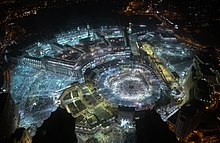





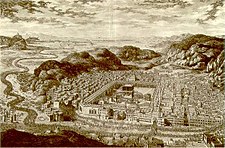





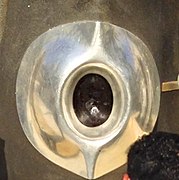

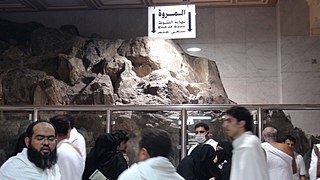

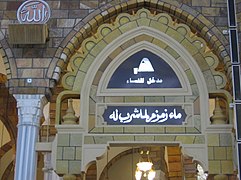

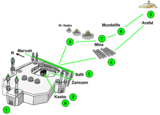

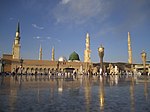







একটি মন্তব্য পোস্ট করুন
ওয়েলফশন মানবকল্যাণ সংঘ যা বিশ্বের কল্যাণকামী মানুষের সম্মিলিত সংগঠন।
যার লক্ষ্য কল্যাণকামীদের একত্রিত করা,শিক্ষা অনুরাগী, কল্যাণ অনুরাগী, জ্ঞান অনুরাগী এবং কল্যাণের জন্য একতাবদ্ধ হতে আকাঙ্ক্ষীদের নিয়ে সততা ও ন্যায়নিষ্ঠার সাথে একতাবদ্ধ হয়ে মানবতার কল্যাণে কাজ করে, সুন্দর সমাজ গড়া। শিক্ষা সচেতনতার প্রচার করা। বিশ্বে শিক্ষা, সততা ও কল্যাণের প্রসার এবং উন্নয়নের মাধ্যমে মানুষের জীবন মানের উন্নয়ন ঘটানো ওয়েলফশনের প্রধান লক্ষ ।
Welfare,Education,Lead,Friend,Truth,Indagator,Organization,Necessary
WELFTION